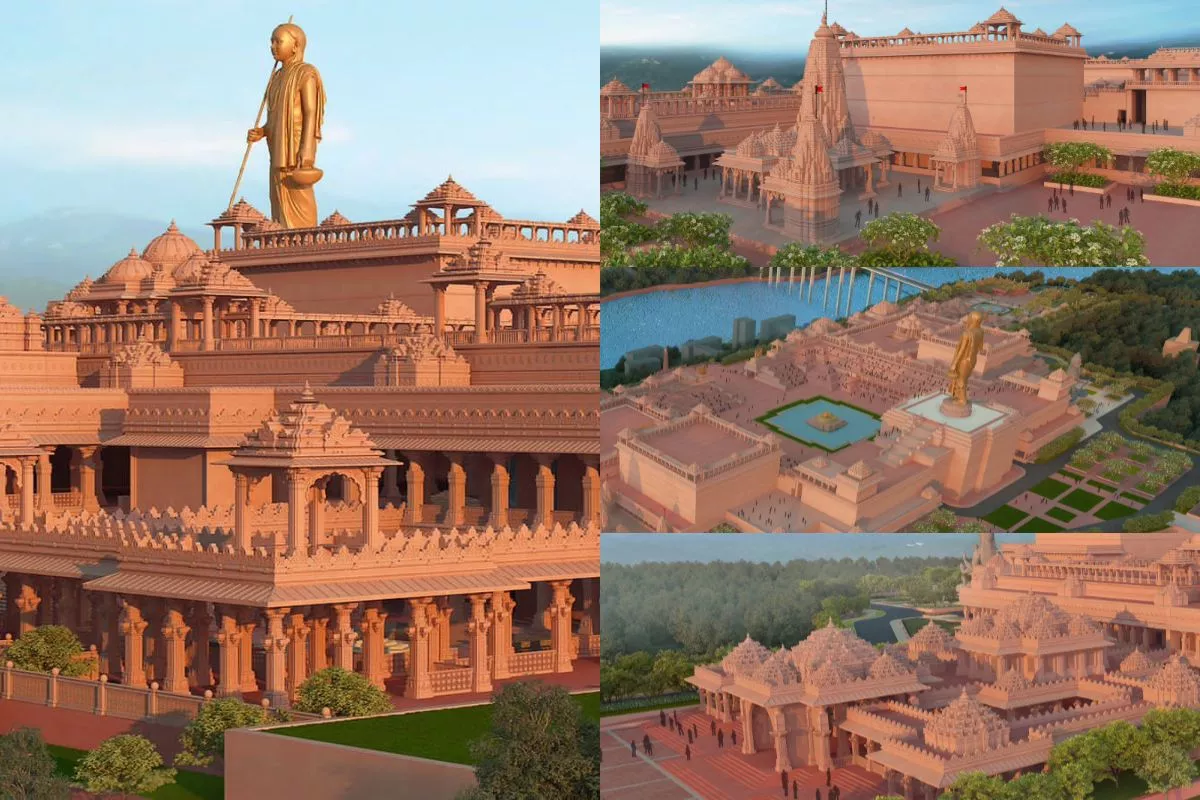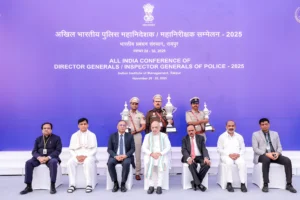
Omkareshwar's
A magnificent event is set to take place in the sacred town of Omkareshwar on September 18th to commemorate Adi Shankaracharya’s birthplace. Named “Shankaravataranam,” this event will not only unveil a statue but also honor the Advaita Loka Shila Nyasa. Advaita Loka, a museum located on the Mandhata Parvat by the Narmada and Kaveri rivers near Omkareshwar, will showcase the artistry of numerous skilled artisans and provide a glimpse of India’s enchanting and rich architectural heritage, which has fascinated archaeologists worldwide since ancient times.
Architectural style of Ekadham
When discussing the architectural style of Ekadham, it will draw inspiration from diverse regional architectural traditions. Temples in Ekadham will be based on the principles of Vastu Shastra, primarily influenced by the Nagar style. Traditional architectural elements like pillars and ornate roofing will be incorporated. Skilled artisans will craft these structures meticulously, employing techniques such as stone carving and using solid stone as building material.
The life stories of Acharya Shankar will be depicted through paintings and sculptures.
Four Research Centers Will Be Established
In a bid to propagate the message of non-dualism and knowledge to the world, four research centers will soon be established, dedicated to Acharya Shankar’s four primary disciples. These centers will be named after these disciples and will operate within the premises of the International Institute of Advaita Vedanta. The centers include Padmapada Center for Advaita Vedanta, Acharya Hastamalaka Center for Advaita Science, Acharya Sureshwar Center for Advaita Social Science, and Acharya Totaka Center for Advaita Literature.
Temples consist of eight primary components
The architectural styles of various regions, including Nagar, Dravidian, Odia, Maru-Gurjar, Hoysala, North Indian, Himalayan, and Kerala temple architectures, will be amalgamated in Ekadham. Nagar-style temples resemble different parts of the human body, a concept rooted in the science of architecture (Shilpashastra). These temples consist of eight primary components:
1. Mula Adhara (Base)
2. Mansuraka (Walls)
3. Jangha (Walls)
4. Kapota (Cornice)
5. Shikhara (Tower)
6. Griva (Neck)
7. Vartulakara Amlaka (Circular Ornament)
8. Kalasha (Pinnacle)
Region of Nagar style
The region of Nagar style extends from Northern India to the northern regions of the Narmada River. However, it has expanded its boundaries in some areas. The Nagar style of temple architecture emphasizes a square plan and height. It prominently features the “Asta,” an elevated portion that emerges at the junction of both corners when the square plan begins. The pinnacle, known as “Shikhara,” takes precedence in Nagar architecture.
Key features of Dravidian style
Dravidian-style temples, on the other hand, can be found from the Krishna River to Kanyakumari. Key features of the Dravidian style include the Prakara (enclosure wall), Gopuram (entrance tower), square or octagonal Garbhagriha (sanctum), pyramidal Shikhara, Mandapa (hall), extensive concentric courtyard, and octagonal temple structure.
vision of Jagatguru Shankaracharya
Ekadham will not only encapsulate these diverse architectural styles but also strive to create harmony among them. It is a testament to the vision of Jagatguru Shankaracharya, who not only founded four mathas (monasteries) in four directions but also made significant contributions to the cultural and artistic unity of these regions.
To read more such news, download Bharat Express news apps


















